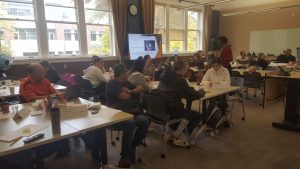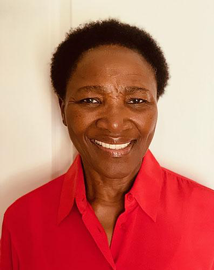Lesson Planning Matters: Learning Points from Tuesday Teaching Talk
“Teaching in a university classroom requires preparation and a redirection of focus. The teaching is not about us; it’s about the students” (Hara, 2010).
I recently facilitated my first Tuesday Teaching Talk to a cross-section of esteemed OSU faculty. If you missed it, this blogpost summarizes the key points covered. The focus of the talk was Lesson Planning and Reflection. The key learning points included the following:
- Lesson planning framework in a university context;
- Constructing S M A R T and S M A R T ER students learning objectives (SLOs) to guide student learning;
- Developing a direct instruction lesson plan to maximize student learning.
Framework for Lesson Planning in a University Context: Although lesson planning is a term that is commonly associated with K-12 education, the concept is relevant to the university context when it is defined as a pedagogical practice of designing a single class or two classes on the same topic within a course. Working from a lesson plan helps university teachers to:
- Focus teaching on student learning;
- Keep student learning objectives/outcomes at the forefront of instruction;
- Maximize academic learning time.

The concept of time which encompasses allocated time, time on task and academic learning time exemplifies a powerful rationale for lesson planning. In order to increase academic learning time, university teachers must be intentional with lesson planning.
Wiggins and McTighe’s (2005) Backward Design informed the framework for lesson planning as shown below:
- What should the students know, understand and be able to do (KUDs) to show that they have attained the student learning objectives (SLOs) of today’s class?
- Through what means (formative assessment) will students demonstrate the attainment of the SLOs?
- What learning experiences (instructional activities) will enable students to attain the SLOs?
Constructing S M A R T and S M A R T ER SLOs: SLOs are specific, behavioral statements of the intended outcome (s) of a particular learning experience (Richmond, Boysen & Gurung, 2016). SLOs must be aligned backward to reflect institutional, program and course goals, and delivered forward to meet these goals. Additionally, SLOs must be written in a decisive way to guide lesson planning and support student learning; they must be S M A R T:
- Specific/Student-oriented
- Measurable
- Attainable
- Relevant
- Time-bound (Cline, 2012).
S M AR T attributes are basic writing conditions. In order to make SLOs specific, measurable and results-oriented and therefore, SMARTER, they must be aligned with the cognitive levels and the knowledge dimensions in the Revised Bloom’s Taxonomy as represented in Table 1 below:
 Table: 1.2 colorized version from original by Anderson, L. W. and Krathwohl, D. R., et al. (Eds.) 2001.
Table: 1.2 colorized version from original by Anderson, L. W. and Krathwohl, D. R., et al. (Eds.) 2001.
The following example illustrates how to blend Bloom’s cognitive level and the dimensions of knowledge to write SMARTER SLOs https://bit.ly/32UR7NH.The discussion of SLOs provides a groundwork for the third learning point: planning a lesson.
Developing a Direct Instruction lesson plan: There are different types of lesson plans. I elaborated on the direct instruction lesson plan. The behaviors incorporated into direct instruction are designed to create a structured learning environment where students are actively engaged and are experiencing a high rate of success (Joyce, Weil & Calhoun, 2004). The behaviors are as follows:
- Pre-planning Reflection: Diagnostic planning
- Lesson opening
- Design Process: Flow/Body of the lesson
- Close/Consolidate
- Reflection Go to https://bit.ly/32UR7NH
The following diagrams illustrate the processes of two direct instruction approaches:

Diagram 1: Gradual Release of Responsibility

Diagram 2: Play, Pause, Repeat Strategy
Diagram 2 forces the question, what kinds of formative assessment techniques should university teachers implement during the strategic breaks between the iterations of instructional input? Go to https://bit.ly/32UR7NH for more information.
If you would like a modified University-level lesson Plan template to use as a working document for crafting lesson plans for their classes, go to Plan a Lesson Plan Template for more information.

References
Anderson, L. W., and Krathwohl, D. R., et al (Eds.) (2001). A Taxonomy for Learning, Teaching, and Assessing: A Revision of Bloom’s Taxonomy of Educational Objectives. New York: Longman.
Cline, J. (2012). Creating successful learning objectives. Retrieved from https://www.youtube.com/watch?v=_woMKwBxhwU
Dutill, J. & Wheler, M. (2017, October 23,). Pause, Play, Repeat: Using Pause Procedure in Online Microlectures. Retrieved from https://www.facultyfocus.com/articles/online-education/pause-play-repeat-using-pause-procedure-online-microlectures/
Hara, B. (2010, January 7). Lesson planning for the university classroom. Retrieved from https://www.chronicle.com/blogs/profhacker/lesson-planning-for-the-university-classroom/22899
Fisher, D. and Frey, N. (2010). Guided Instruction: How to develop confident and successful learners. Alexandria, VA: ASCD.
Joyce, B., Weil, M., & Calhoun, E. (2004). Models of teaching (7th edition.). Boston: Pearson.
Richmond, A. S., Boysen, G. A., and Gurung, R. A. R (2016). An evidence-based guide to college and university teaching: Developing the model teacher. New York: Routledge.
 Funmi Amobi is an instructional consultant and College Liaison in Oregon State University’s Center for Teaching and Learning. Funmi provides consultations to faculty in individual and small group settings to support teaching excellence and student success. Funmi holds a doctorate degree in secondary education with major emphasis in curriculum and instruction from Arizona State University. As a reflective practitioner, she is a life-long student of the scholarship of teaching and learning. To schedule a Sparkshop call Funmi @ 541 737 1338 or email: Funmi.Amobi@OregonState.edu
Funmi Amobi is an instructional consultant and College Liaison in Oregon State University’s Center for Teaching and Learning. Funmi provides consultations to faculty in individual and small group settings to support teaching excellence and student success. Funmi holds a doctorate degree in secondary education with major emphasis in curriculum and instruction from Arizona State University. As a reflective practitioner, she is a life-long student of the scholarship of teaching and learning. To schedule a Sparkshop call Funmi @ 541 737 1338 or email: Funmi.Amobi@OregonState.edu
 Blended learning is a prominent feature of the teaching and learning landscape at Oregon State University. Since 2012 when OSU established the hybrid course schedule type, Corvallis campus hybrid courses have enrolled more than 42,000 students. The number of hybrid course sections has grown by more than 20% every year.
Blended learning is a prominent feature of the teaching and learning landscape at Oregon State University. Since 2012 when OSU established the hybrid course schedule type, Corvallis campus hybrid courses have enrolled more than 42,000 students. The number of hybrid course sections has grown by more than 20% every year.


















